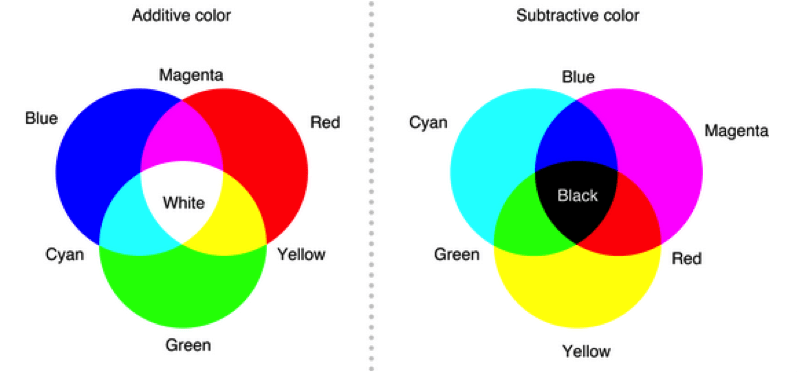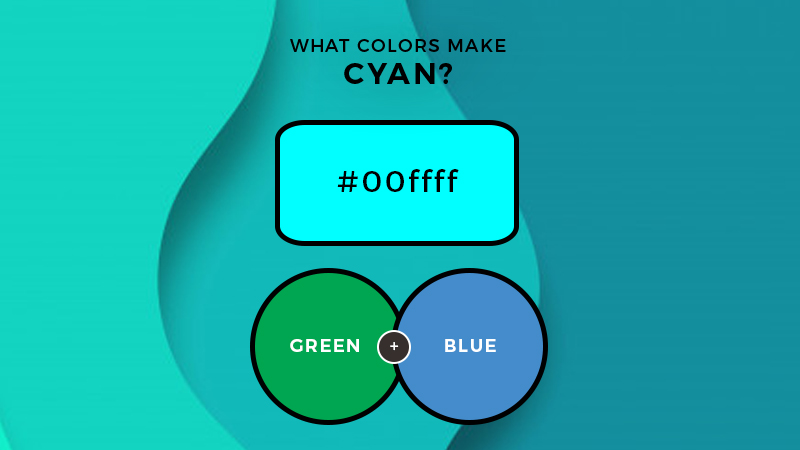What Colors Make Cyan? What Two Colors Make Cyan
Have you recently heard about the color cyan and want to learn how to make it by mixing colors?
In this article, we will help you understand the role cyan plays in art and design, and how you can combine different colors to create it for your own purpose.
Keep reading…
You’ve probably encountered situations where you need to use the color cyan.
Whether you’re an artist trying to paint with an ocean blue tint or a graphic designer who is trying to recreate Uranus’ hue, knowing how to make cyan can come in handy.
However, before we talk about what colors make cyan let’s discuss some fundamentals of the “Color Theory”.
Color Theory and Different Color Models
To briefly explain, color theory refers to the science and art of using colors. From understanding colors, and knowing the visual and psychological effects of color mixing, to identifying color schemes that will effectively communicate your design, there are certain sets of rules and guidelines that the color theory presents.
RYB Color Model
Under this principle, colors are organized in a wheel-like pattern and sorted into 3 categories: the primary, the secondary, and the tertiary.
This is known as the “Color Wheel,” which comes as the basic tool for understanding the art of color mixing.
As taught by your teacher in school, primary colors are composed of red, blue, and yellow. These three colors are believed to be the main ingredients in creating other colors.
Meanwhile, secondary colors refer to those that are created when you’ve mixed certain sets of primary colors together. They are composed of orange, green, and purple.
Lastly, tertiary colors are formed by mixing a primary color with a secondary color to get: red-orange, yellow-orange, yellow-green, blue-green, blue-purple, and red-purple.
RGB and CMYK Color Model
However, there are also other types of color models like RGB and CYMK, which are usually referenced in the printing and graphic design industry.
The RGB model mixes Red, Green, and Blue light sources of various intensities which allows you to create different colors. Under this model, the more light you add, the brighter the color mix becomes; thus, the name “the additive color mixing model.”
The CMYK model is composed of the colors Cyan, Magenta, Yellow, and Black. CMYK is referred to as the “subtractive color mixing model” because it works by adding more color to subtract the light from the paper.
Why is it important to know the distinction between the color models you ask? When referencing how to mix colors it is dependent on what device you’re talking about.
If you’re trying to mix colors and display correctly on a monitor then you should use the RGB color model.
If you’re trying to do printing on white paper for example then you would reference color codes from the CYMK color model.
When talking about the color cyan is often brought up in discussions as it’s the foundation color of the CYMK model and it’s a result of mixing colors in the RGB model.
How to Make the Color Cyan?
Now that you’ve learned the fundamentals of color theory and its different color systems, let us help you answer the questions “what colors make cyan” and “what two colors make cyan?”.
By referencing the diagram above in the Additive Color Chart, you’ll see that you can mix green and blue to make cyan.
However, there are many shades of cyan and if you’re trying to mix paint to get a certain hue of cyan you may have to use a few more colors.
You can also add a certain amount of yellow and white until you reach your desired shade and tone of cyan. We suggest you experiment with different levels of each color to get the cyan color that you like best.
The Color Cyan in Design
The color Cyan plays a major role in art and nature. Specifically, since it exhibits a combination of blue and green, it is usually used to portray the color of water often found in lagoons and hidden water sanctuaries.
In other events, it is also the color used to paint the planet Uranus and give life to methane’s enigmatic flames.
To date, the color is often used to relay the development associated with the color green and the soothing effect that the color blue provides. From this, it is also often used to connote the ideas of cleanliness and hygiene.
The Bottom Line
Are you ready to dive into an artistic project that concerns the color Cyan? Now that you’ve identified the right pigments to mix to arrive at your desired color, you are now free to use the color Cyan as much as you like no matter the subject you’re eyeing to present.
Read Latest Posts

Hi, I'm Anthony Tran! Welcome to my site. I live in Arizona and am obsessed with all things related to building an Online Business and working from home. Learn about my journey here.
Follow Online







